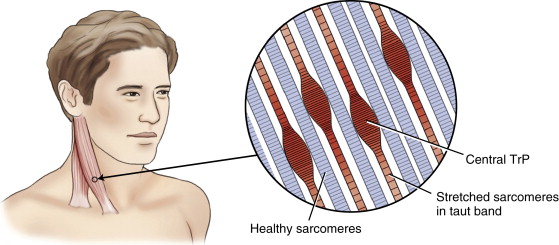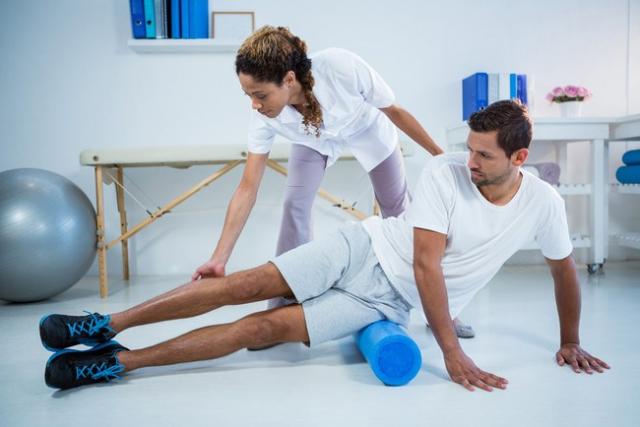Foam rolling is a term that you often hear in the rehabilitation, exercise, and sports communities. But do you know what it is, how it works, or how to do it? Foam rolling is a form of self-myofascial release, which is basically a fancy term for self-massage. Foam rolling has many applications for people of all ages and fitness levels. It can be a very valuable tool to help improve overall mobility, muscle flexibility, posture, movement patterns, enhance post-exercise recovery, and increase performance in athletic activities.
 Often times “knots”, technically known as trigger points, can form in a muscle secondary to strenuous activity, poor posture, direct trauma or a fall, and even prolonged periods of inactivity. These can cause referred pain. Referred pain, for our purposes, is pain that originates in one area, but travels or radiates and manifests elsewhere in the body. A common example of a trigger point is in hamstring and when pressure is applied to the trigger point the pain can radiate up to the hip or down the back of the leg to the knee.
Often times “knots”, technically known as trigger points, can form in a muscle secondary to strenuous activity, poor posture, direct trauma or a fall, and even prolonged periods of inactivity. These can cause referred pain. Referred pain, for our purposes, is pain that originates in one area, but travels or radiates and manifests elsewhere in the body. A common example of a trigger point is in hamstring and when pressure is applied to the trigger point the pain can radiate up to the hip or down the back of the leg to the knee.
Stretching alone usually will not help eliminate the problem. Imagine a bungie cord with a knot tied in the middle. If you were to stretch that bungie cord, it will keep getting longer, but the knot will still be there. Foam rolling can be a powerful adjunct to a stretching program to help eliminate trigger points and pain.
So how does foam rolling work? There is still lots of research being done to determine the exact physiology behind it. But in theory it helps to promote blood flow to the area, break up adhesions that form in the myofascial layers, and help relax the muscle to restore normal function and movement.
Foam rolling can be performed on just about any major muscle group, and a small firm ball such as a lacrosse ball can be used for smaller areas. It seems pretty simple, right? Just roll up and down on a muscle. However, it’s a little more complicated than that. Proper positioning, pressure application, and duration are all important variables to achieve the desired effect. If you are unfamiliar with the practice of foam rolling and think that it may be something you would benefit from, then it is advised to seek consultation from a healthcare professional such as a physical therapist before attempting it alone. After a thorough evaluation and movement screen, we can help to identify the appropriate areas that need to be targeted by foam rolling, and how to properly do it.
 Peter Geloso, DPT is a physical therapist at Amity Physical Therapy in the Woodbridge office. He received both his Bachelors in Exercise and Sport Science and Doctorate of Physical Therapy from Elon University. He is a licensed Physical Therapist in the State of Connecticut and treats patients of all ages and ability levels with special interest in cycling and cross training injuries. He can be reached by phone with any questions at (203) 389-4593.
Peter Geloso, DPT is a physical therapist at Amity Physical Therapy in the Woodbridge office. He received both his Bachelors in Exercise and Sport Science and Doctorate of Physical Therapy from Elon University. He is a licensed Physical Therapist in the State of Connecticut and treats patients of all ages and ability levels with special interest in cycling and cross training injuries. He can be reached by phone with any questions at (203) 389-4593.


